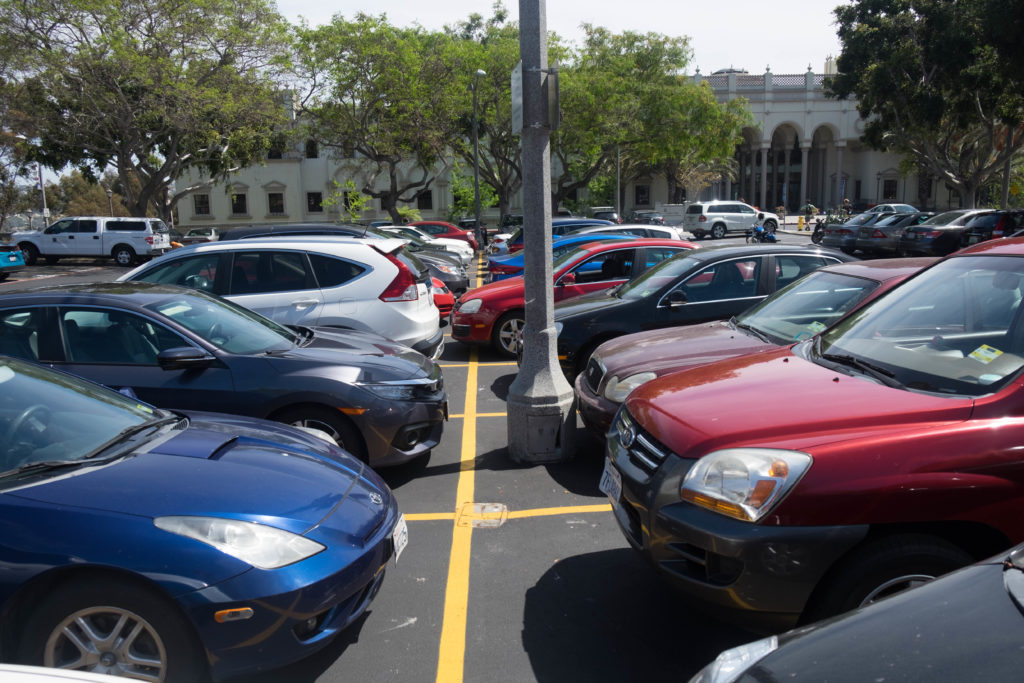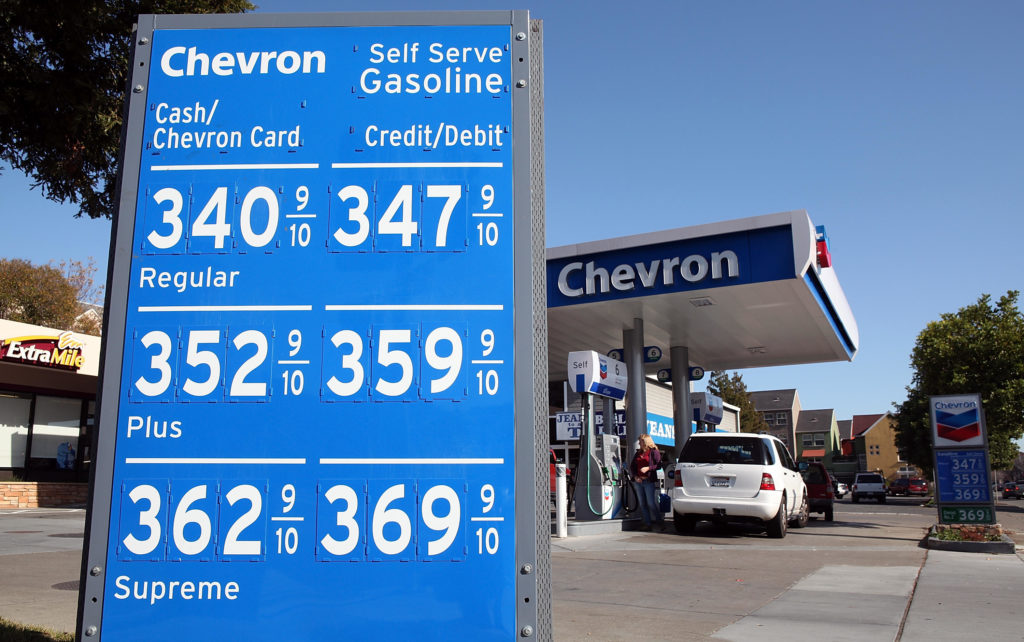Gas prices cause contemplation
Students reconsider driving habits as a result of increased gas prices in San Diego
Lilyana Espinoza | News Editor | The USD Vista
In March of 2015 when senior Mshary Arnous received his BMW M4, he treasured driving anywhere and everywhere he could. The car had everything that Arnous could have ever dreamed of, but little did he know that he would slowly have to make changes to how he drove his car due to rising gas prices.
Although Arnous loves to drive his car everywhere, even from his Pacific Ridge apartment to USD, he realized changes had to be made in how often he used his car.
“I stopped driving to school — I only drive for the necessary stuff such as food, and I have weeks where I only drive during the weekends,” Arnous said. “On the weekends I will go as far as Los Angeles, so if I am planning to do a trip I won’t use my car during the week. Years ago when the price was better, I would use my car five to six times a day.”
Arnous continues to put premium gas in his car knowing that it is the most expensive. He remembered that a few years ago he spent about $35 to $40 to fill up his tank and now it costs him anywhere from $50 to $60. Arnous has to find alternatives to save money on gas other than switching from premium gas.
“My car has different modes in which I can play with the car: efficiency, sport, and sport plus,” Arnous said. “Using each mode affects the gas that I am using. If I am using sport plus then I will be putting gas in my car four times a week. Before the gas increase, my car would always be in sport plus. Now, 70 percent of the time it is on efficiency mode.”
With the steady increase in gas prices, Arnous has also begun to consider the option of not driving his own car places, but carpooling instead when traveling far distances.
“I was never the guy who supports the idea of carpooling,” Arnous said. “I love to take my car out by myself, but if the price keeps increasing I would start to support the idea of carpooling with someone. It was always me and my car and if someone wanted to come along with me they can, but we are definitely taking my car. But now with the increase I might consider saying, ‘Yes we are taking your car, we aren’t taking mine.’”
According to The Balance, an online financial empowerment website, crude oil prices are the cause for the high gas prices. The San Diego Union-Tribune stated that California has higher gas prices compared to other states because of higher taxes, as well as a higher standard for fuel that is meant to reduce air pollution.
First-year Jared Hebreo commutes 25 minutes from home to campus four times a week and will stay on campus for the entire day before returning home.
“I usually do 91 (premium) gas, but recently I have been doing 89 because of the recent rise in prices,” Hebreo said. “I think the last time I filled up gas it was $46. I feel that I shouldn’t have to pay for gas that is above $3.50 a gallon and I think that is what it is set around for the 89 now. The 91 is about $3.70 around the areas I get gas. Even if the lowest gas is at $3.50 I will just pay for that. I don’t want to pay more than what I think I should for gas.”
Although Hebreo has made no changes in his driving habits, he recognized that he would make some changes if prices keep increasing.
“I find (gas prices rising over $4.00) hard to imagine, but I definitely wouldn’t be giving people rides as much,” Hebreo said. “Since I am a commuter at a college, I always drive my friends around and I feel that I would be more conservative when it comes to that. I wouldn’t be willing to drive them around as much.”
Hebreo also said he would consider asking friends for gas money if the prices continued to increase at its current rate.

Gas prices affect students who commute to campus and to work, potentially influencing their driving habits.
Cyrus Lange/The USD Vista
Gas prices in San Diego have increased over a dozen times in less than a month, according to CBS 8. The gas prices today in San Diego are at its highest price since August of 2015 at $3.52 a gallon as stated by FOX5.
According to the AAA gas prices, the regular national gas price average was $2.42 per gallon compared to California’s price of $3.01 a year ago. The current national average is $2.76 versus the current California average of $3.52.
AAA spokesman Jeanette Casselano gave several reasons why gas prices are increasing in a statement by AAA.
“Expensive crude oil prices, unrest in the Middle East, strong domestic demand, record production rates, and global oil supply surplus have created the perfect storm to drive spring gas prices toward new heights,” Casselano said.
Junior Sean Ewing currently drives a 2012 Toyota Corolla and voiced his concern regarding the spike in gas prices.
“The instability of gas prices is a little scary because you really never know what you will be paying now versus next month,” Ewing said. “It makes it very hard to commit to a job or activity that requires a long commute because if gas prices spike, you might find yourself in a situation where your job is no longer worth the pay.”
Ewing’s commute from his Pacific Ridge apartment to his job, located in both El Cajon and Lemon Grove, is 40 miles round-trip twice a week. He is compensated for his gas as well as paid hourly.
“(The increase in gas prices) has had to make me consider the value of having a commuting job,” Ewing said. “My current job, being so far away, does reimburse for gas thankfully. However, if this job didn’t reimburse for gas or if I was looking for another job that didn’t, I would have to really take into account the compensation provided and subtract that from the average gas cost to determine if the job is really worth it and what my actual ‘take-home’ salary would be.”
This increase in prices is at the forefront of the minds of people who travel by car, especially for those who commute to and from farther locations.
